The week at a glance
- Crag Martin in East Yorkshire
- Pied-billed Grebe at Rutland Water
- Baikal Teal back in Cambridgeshire
- Ten Black-winged Stilts on the Isle of Wight, while a pair flies from Essex to Dorset and back again
- American Coot still in Highland
- Sora still on Scilly early on
- County 'firsts' in the form of White-spotted Bluethroat in Herefordshire and Serin on the Outer Hebrides
After a relatively subdued start to spring, the second week of April saw excitement levels build, not least thanks to Britain's earliest-ever Crag Martin, found at Flamborough Head (E Yorks) in mid-morning on Friday 11th. Crag Martin is a notorious one-day species — each of the nine previous records has lingered no longer than a matter of hours at its site of discovery — but the Flamborough bird went on to buck the trend when, having flown off south early on Friday afternoon, it sensationally reappeared on the north side of the headland on Saturday afternoon, where it went on to show well until dusk. Another relatively brief showing to a large and appreciative crowd on the Sunday morning was all the bird could muster before it disappeared south once more, and it has not yet been seen again. Nevertheless, that was enough to label it comfortably Britain's most cooperative Crag Martin.
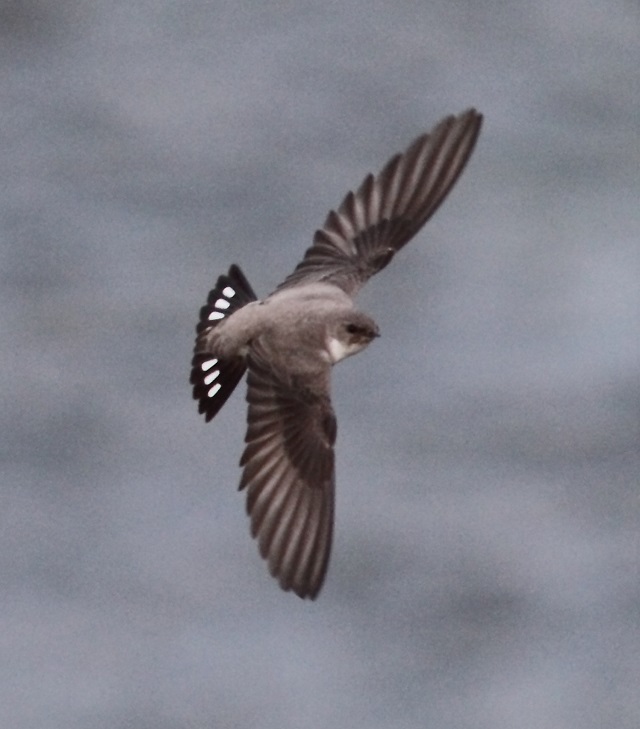
Crag Martin, Flamborough Head, East Yorkshire (Photo: Scott Reid)

Crag Martin, Flamborough Head, East Yorkshire (Photo: Mark Pearson)
Also providing excitement was a two-day Pied-billed Grebe — not on the Outer Hebrides (though that bird was still on North Uist on 15th), but at the more accessible location of Rutland Water on 9th–10th. Showing beautifully at times along the south side of the reservoir, it proved a popular pre- and post-work fixture for many Midlands-based birders before disappearing all too quickly. Further excitement came with the Sora again showing a couple of times on St Mary's (Scilly) on 9th and 10th, with a Spotted Crake in the exact same spot later on in the week.

Pied-billed Grebe, Rutland Water, Leicestershire and Rutland (Photo: Dave Kelsall)

Pied-billed Grebe, Rutland Water, Leicestershire and Rutland (Photo: John Saunders)

Spotted Crake, St Mary's, Isles of Scilly (Photo: Martin Goodey)
Keeping observers on tenterhooks regarding its credentials was Cambridgeshire's Baikal Teal — just when it seemed like it had moved on (to the pleasure of many who'd seen it!), it was back again on the Ouse Washes north of Pymoor on 14th–15th, often seen alongside a Green-winged Teal (funnily enough, no questions about that bird's origins...) and a couple of Glossy Ibis, while the Ring-necked Duck was last seen there on 13th. Up in Scotland, the American Coot lasted at Loch Flemington until at least 14th — he sure seems to like it there.
No American Wigeon were reported this week, although there was a Blue-winged Teal at The Shunan (Orkney) on 13th and ten Green-winged Teal nationwide — new birds were at Blacktoft Sands (E Yorks), Quoile Pondage (Down) and East Stobswood Pool (Northumberland) all from 12th. Northumberland's Ferruginous Duck was last seen at Gosforth Park on 9th, while Cornwall's Lesser Scaup had moved from Dozmary Pool to nearby Siblyback Reservoir by 12th. Drake Ring-necked Ducks were new in at Lough Skean (Sligo) on 10th, March Farmers (Cambs) on 11th–14th and at Abberton Reservoir (Essex) from 12th. The drake also remained on Shetland, as did the female on North Uist. Scarce geese continue to dwindle, though twos of Snow Geese remained at Tayinloan (Argyll) and Braehead (Clyde), and a Black Brant was noted in Suffolk.
Female King Eiders remained off Portnoo (Donegal), Ruddon's Point (Fife) and Fidra (Lothian), while last week's Surf Scoter continued off Dawlish Warren (Devon) to at least 14th — long-stayers remained in Cornwall and Lothian. Scotland monopolized White-billed Diver reports, with at least three still off Portsoy (Aberdeenshire) on 15th, a new bird off St Abb's Head (Borders) on 12th and the Orkney bird off Herston on 13th.
A few new Cattle Egrets were seen: at Carsington Water (Derbys) on 9th, Colyford Common (Devon) on 10th and Eldernell (Cambs) on 12th–13th.
A Black Kite over Scolt Head (Norfolk) on 9th was presumably that later reported in the Holme area on 9th–12th; White-tailed Eagle reports came from Kildale (N Yorks) on 11th and Beccles (Suffolk) then Lynford Arboretum (Norfolk) on 13th. Rough-legged Buzzards were at Donna Nook and Saltfleetby (Norfolk) on 9th, over North Tuddenham (Norfolk) on 9th and over Saltwood (Kent) on 13th.
The first Pectoral Sandpipers of the spring were at South Huish Marsh (Devon) on 10th–13th and on North Ronaldsay (Orkney) on 15th. Hampshire's Long-billed Dowitcher and Lesser Yellowlegs both remained in situ all week, but the headline on the shorebird front was a spectacular flock of ten Black-winged Stilts at Brading Marshes, on the Isle of Wight, on 12th. Fewer in number but no less impressive were the antics of a pair of stilts first found at Bowers Marsh (Essex) before relocating to the Bestwall/Swineham area of Dorset on 12th–13th, only to return to Essex — albeit this time at Old Hall Marshes — from 14th. Such wanderings have been well documented in this species in Britain in recent springs, no doubt thanks to their distinctiveness and plumage variation, which generally makes it possible to identify individual birds.

Pectoral Sandpiper, South Huish Marsh, Devon (Photo: Alan Doidge)
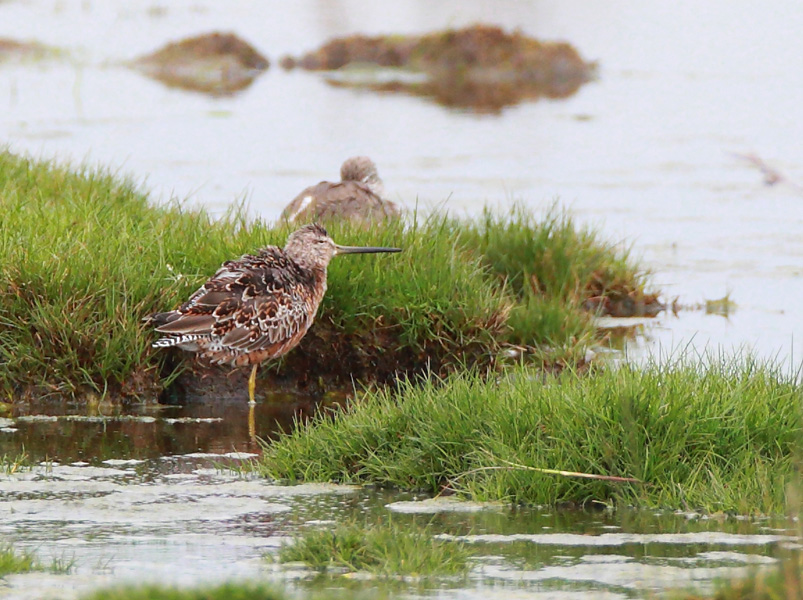
Long-billed Dowitcher, Pennington Marshes, Hampshire (Photo: Mike Trew)

Black-winged Stilt, Bestwall RSPB, Dorset (Photo: Simon Kidner)
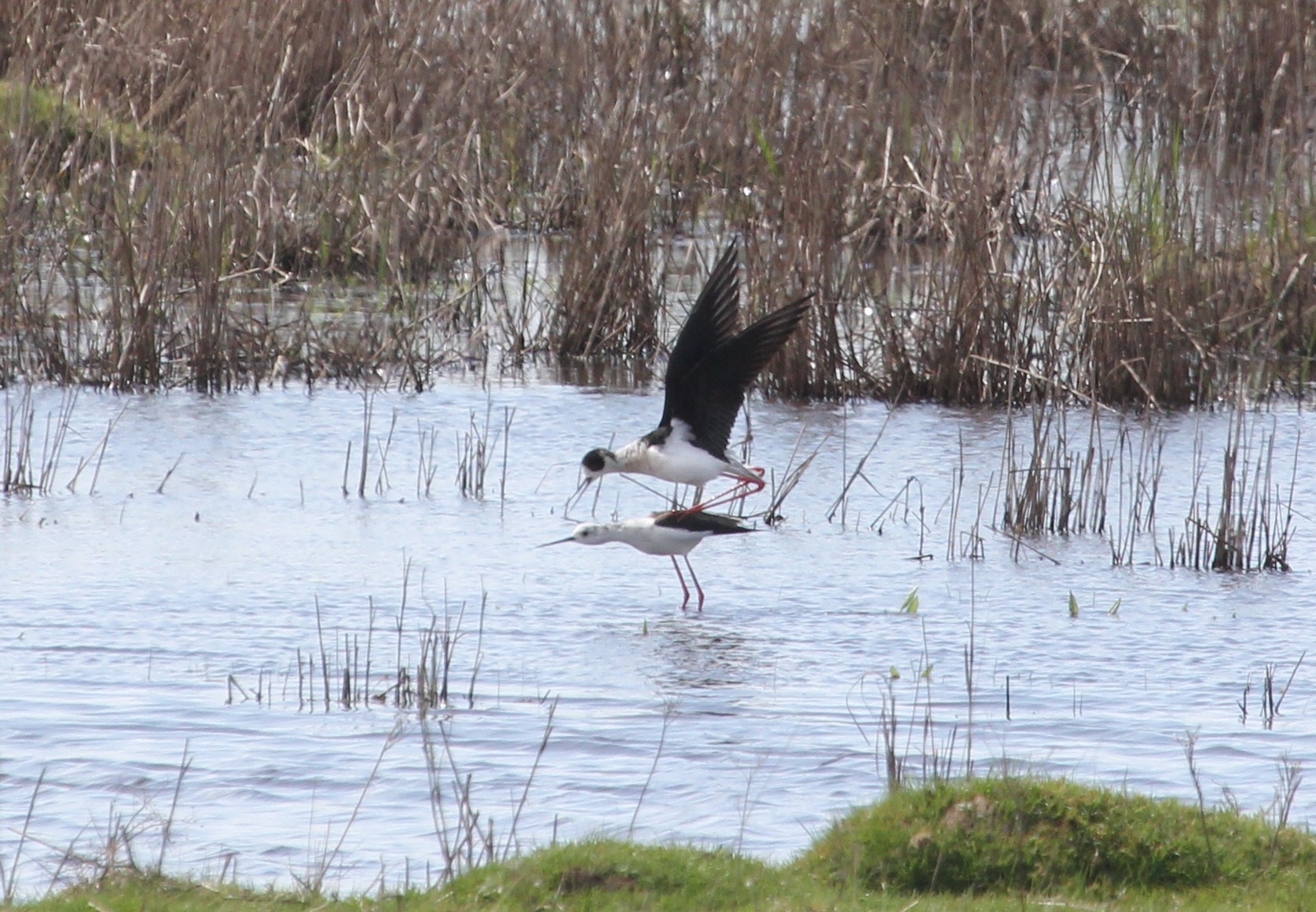
Black-winged Stilt, Old Hall Marshes RSPB, Essex (Photo: Sue Lawlor)
Black-winged Stilt, Bowers Marsh RSPB, Essex (Video: UK wildlife)
The Forster's Tern was still on the south side of Galway Bay on 11th, seen near Tawin. Otherwise, rare gull news was limited to the Franklin's Gull still on Canna (Highland) on 12th and just two Ring-billed Gulls, at Belfast Lough (Antrim) on 12th and Lurgan Green (Louth) on 13th–14th.
Hoopoes were again the most populous of scarce migrants, with 15 reported, nine of them new in. Otherwise there were fairly slim pickings, with just a couple of Wrynecks (Winterton, Norfolk, on 10th and St Martin's, Scilly, on 15th) and a Bee-eater on St Mary's (Scilly) on 15th. Four Red-rumped Swallows sneaked in as far as Durham (Rainton Meadows on 13th), with others at Owenahincha (Cork) briefly on 10th, Felbrigg Hall (Norfolk) on 12th–13th and on Jersey. Herefordshire was treated to its first-ever White-spotted Bluethroat, a smart female at Wellington Gravel Pits on 12th — this represents the first British record of 2014 and is a brilliant inland find.
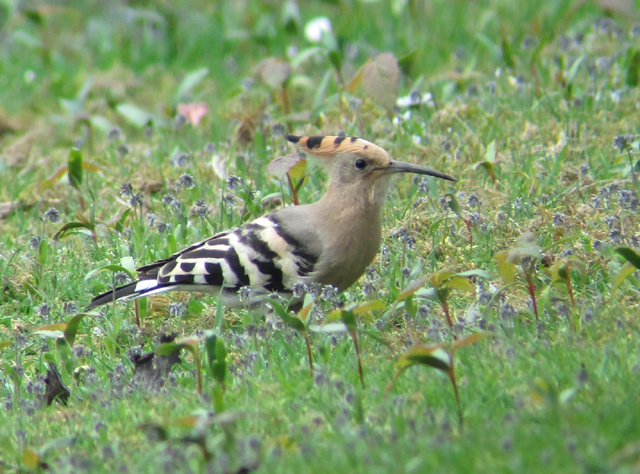
Hoopoe, Snodland, Kent (Photo: Andy Johnson)

Hoopoe, Greylake RSPB, Somerset & Bristol (Photo: Carl Bovis)

Red-rumped Swallow, Felbrigg Hall NT, Norfolk (Photo: Trevor Williams)
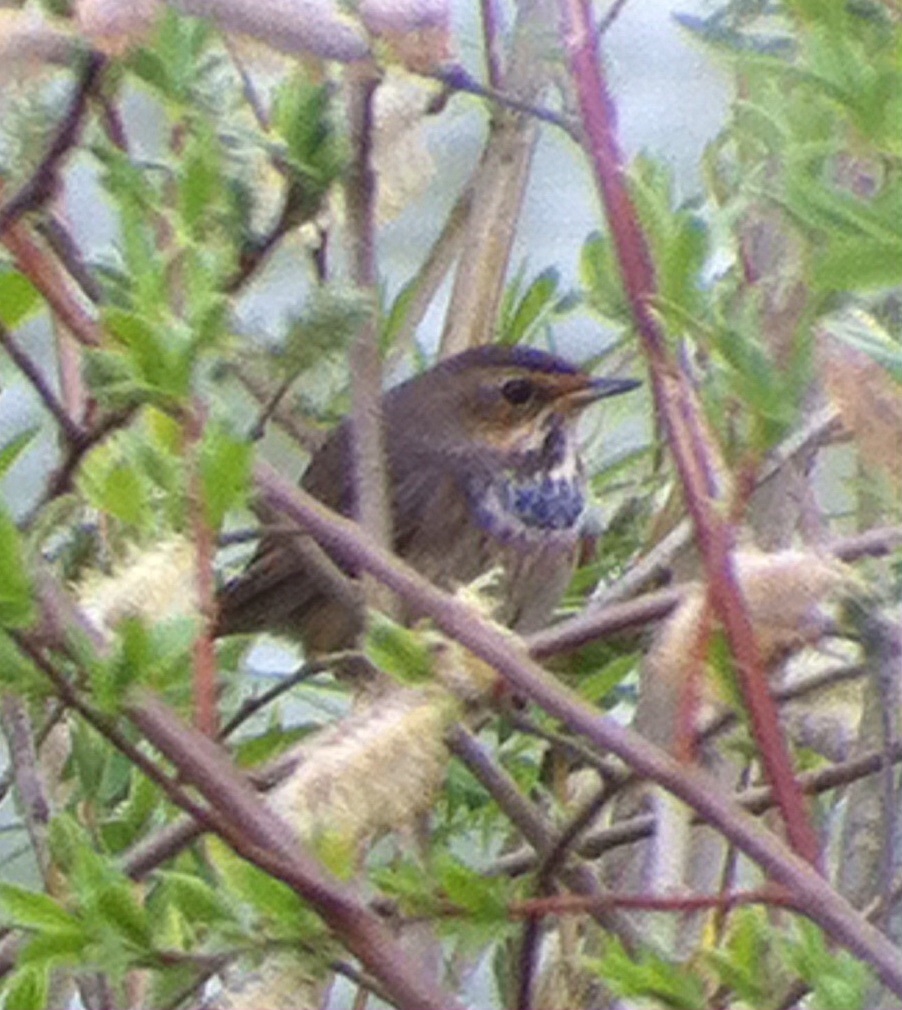
White-spotted Bluethroat, Wellington GPs, Herefordshire (Photo: Espen Quinto-Ashman)
A twitchable Tawny Pipit is a rare enough event these days, so a particularly co-operative individual present around the headland at Flamborough from 11th onwards was a great bonus for Crag Martin twitchers. A Richard's Pipit flew over Spurn (E Yorks) on 10th.
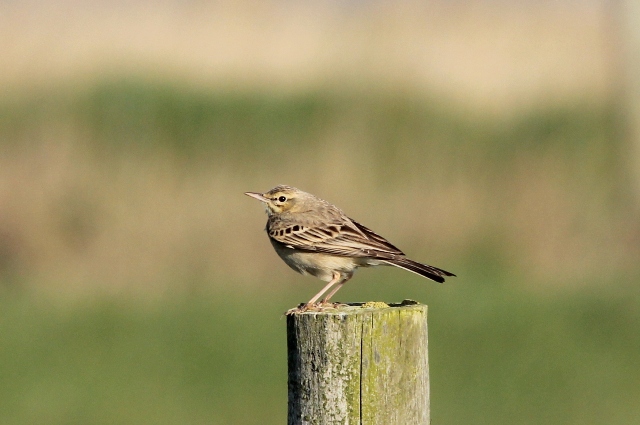
Tawny Pipit, Flamborough Head, East Yorkshire (Photo: Diogo Batista)
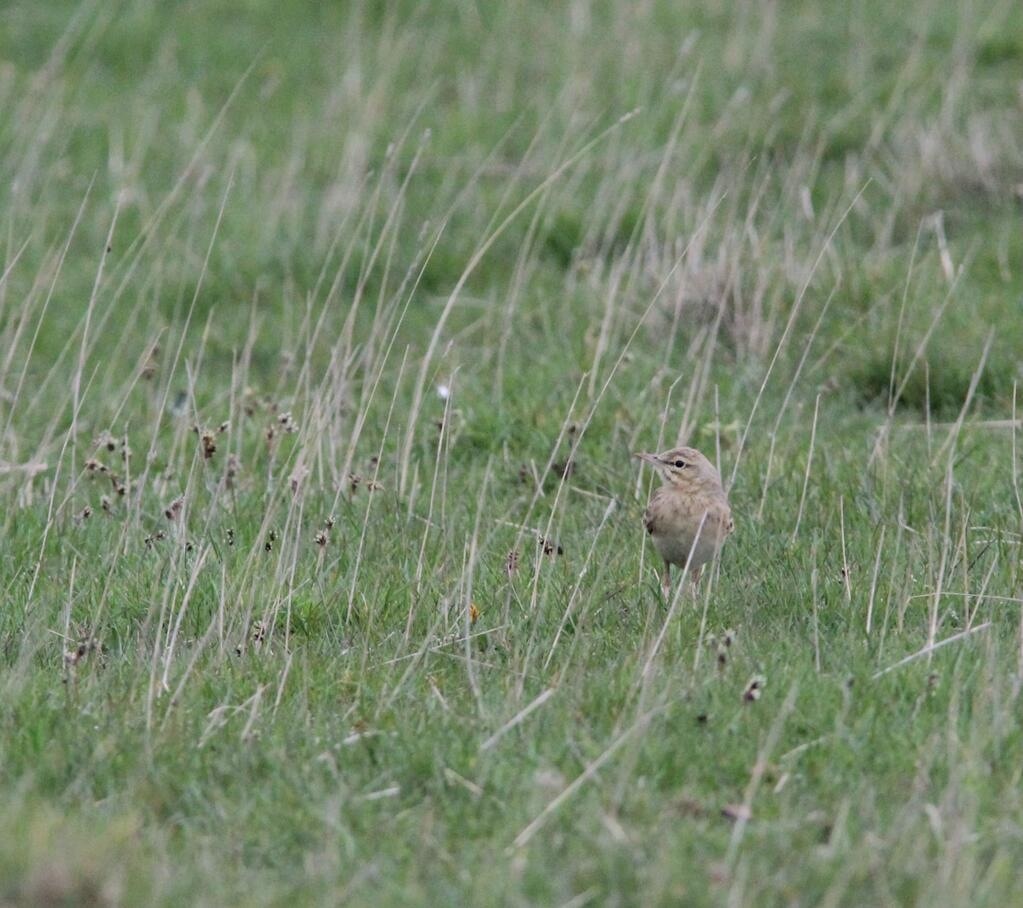
Tawny Pipit, Flamborough Head, East Yorkshire (Photo: Ellis Lucas aged 12)
An Eastern Subalpine Warbler was belatedly reported from Swanage (Dorset) on 14th, having been seen on 11th. A Subalpine Warbler was on Guernsey for a few days from 10th. Similarly evading the public eye was the year's first Iberian Chiffchaff, photographed and sound-recorded on private land at Grimston (E Yorks) on 13th; unfortunately, attempts to arrange access failed to come to fruition.
Meanwhile, wintering warblers included the presumed Siberian Lesser Whitethroat still in Sheffield (S Yorks) on 15th and Yellow-browed Warblers still at Bruton (Somerset) on 13th and Uffmoor Wood (Worcs) on 15th. The Hume's Leaf Warbler lingered another week at Dungeness (Kent), while Dusky Warblers continued at Oulton Marshes (Suffolk) and in a private garden in Great Barr (W Mids).
Two-barred Crossbills remain prominent, with three still at Lynford Arboretum (including the contentious wing-barred bird) and five at Broomhead Reservoir (S Yorks) on 11th (three on 13th). Males were still at Dove Stone (Gtr Man) throughout and at Hemsted Forest (Kent) on 13th; the female was also again in Leith Hill Wood (Surrey) on 13th.

Two-barred Crossbill, Lynford Arboretum, Norfolk (Photo: Graham Clarke)
The Outer Hebrides' first Serin was recorded this week: a female found in a garden at Askernish on 11th was relocated in the South Glendale area of South Uist from 12th onwards. Rather more routine were birds over North Foreland and Dungeness (Kent) and Hengistbury Head (Dorset), while two were at Spurn (E Yorks) on 12th and another flew over Frampton Marsh (Lincs) on 13th. A presumed Coues's Arctic Redpoll featured at Caerlaverock WWT (Dumfries & Galloway) on a couple of dates, while a ringed male House Finch was at Kilnsea (E Yorks) on 10th — an escape, but stunning nonetheless.
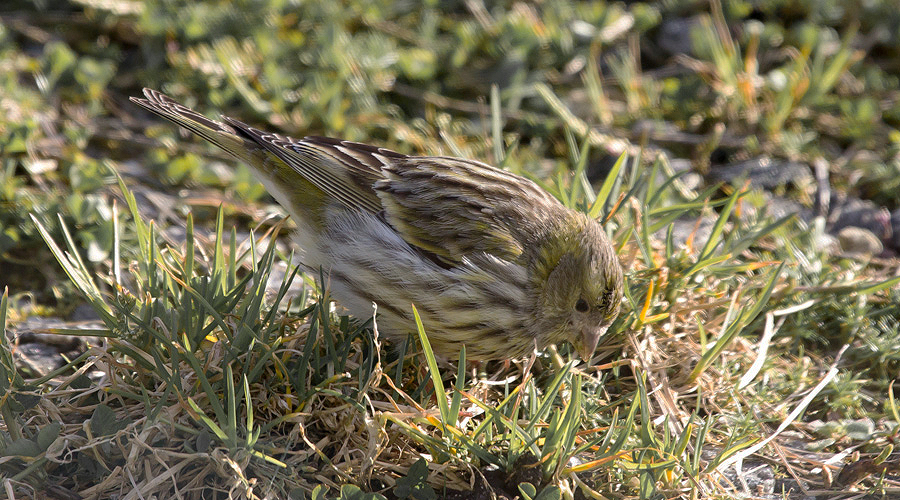
Serin, Askernish, S.Uist, Outer Hebrides (Photo: Yvonne)

House Finch, Kilnsea, East Yorkshire (Photo: Billy Harbottle)
Photo of the Week

Tawny Owl, undisclosed site, Leicestershire and Rutland (Photo: Paul Riddle)
Among his other excellent work, photographer Paul Riddle has provided us with a wealth of fine owl shots in recent years, most notably both Little and Tawny Owls. Having received three Photo of the Week awards for his Little Owl studies during that time, Paul's subsequent dedication to Tawny Owls in the East Midlands ultimately paid off this week when the male of one of his 'regular' pairs appeared to hunt much earlier than normal. Earlier in the evening naturally equates to better light, and Paul has captured the rich rufous of the owl's plumage superbly against a background of vibrant green spring vegetation without any hint of noise or colour distortion (or indeed other photographic artefacts) that are often present in owl shots taken just prior to dusk. An exposed, natural perch, the bird's dynamic posture and focused eyes — as if watching intently for prey — only add to the scene.
Other notable images

Pied-billed Grebe, Rutland Water, Leicestershire and Rutland (Photo: Dave Kelsall)

Corn Bunting, undisclosed site, Suffolk (Photo: John Richardson)

Lapland Bunting, Bempton Cliffs RSPB, East Yorkshire (Photo: Alan Shearman)

Redstart, undisclosed site, Shropshire (Photo: John Fielding)

Two-barred Crossbill, Lynford Arboretum, Norfolk (Photo: Graham Clarke)

Skylark, Trefil, Gwent (Photo: Norman West)

Grey Wagtail, Bridges, Shropshire (Photo: Tony Webb)
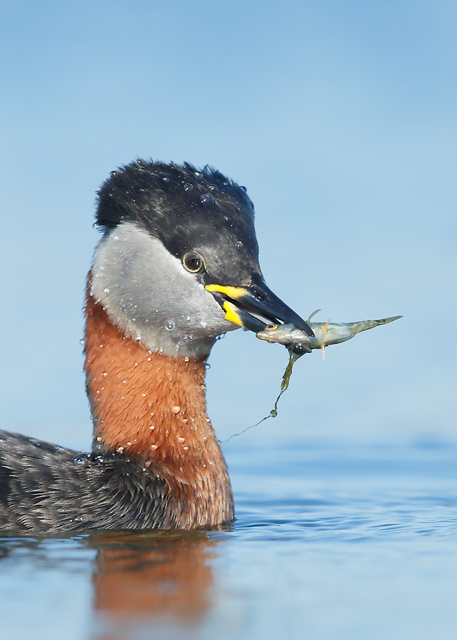
Red-necked Grebe, Farmoor Reservoir, Oxfordshire (Photo: Iain H. Leach)

Greenfinch, undisclosed site, Suffolk (Photo: Harry Read)

Wood Warbler, Speech House Woodland, Gloucestershire (Photo: Lewis Thomson)

Gannet, Bempton Cliffs RSPB, East Yorkshire (Photo: Mandy West)

Oystercatcher, Minsmere RSPB, Suffolk (Photo: Nick Brown)


